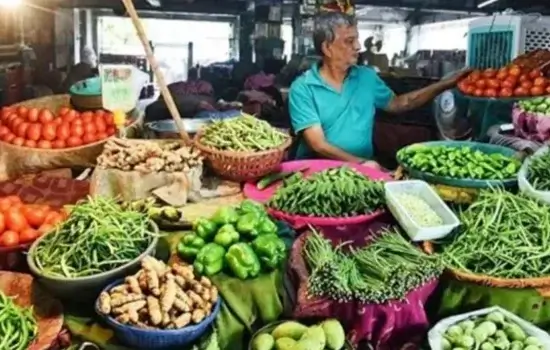India’s retail inflation eased to 5.48% in November 2024, down from 6.21% in October, primarily due to improved vegetable supplies.
However, despite this decline, food prices continue to exert pressure on household budgets, reflecting the complex dynamics of India’s food inflation.
Persistent Food Price Pressures
Food inflation remains a significant concern, with the Consumer Food Price Index (CFPI) rising from 3.8% in FY22 to 7.5% in FY24, indicating a 97% surge over two years.
This increase underscores the vulnerability of food prices to factors such as climate change, which has led to erratic weather patterns affecting crop yields.

Impact of Climate Change on Agriculture
Climate change has intensified extreme weather events, adversely impacting agriculture. For instance, droughts in Vietnam and Brazil have caused coffee prices to soar, while flooding and droughts in China, India, Rwanda, and Kenya have affected tea production. Similarly, heatwaves and heavy rains in West Africa have disrupted cocoa production, leading to higher chocolate prices.
Government Measures and Challenges
The Indian government has implemented measures to stabilize food prices, such as banning rice exports to ensure domestic availability. Despite these efforts, challenges persist. For example, India’s wheat prices have risen due to anticipated warmer winters, which could affect yields. The government plans to release 2.5 million metric tons of wheat from state reserves to control prices.
Economic Implications
Elevated food prices have broader economic implications, including reduced consumer spending and potential delays in monetary policy easing. The Reserve Bank of India (RBI) has raised its inflation projection for FY25 to 4.8%, up from 4.5%, citing lingering food price pressures.
This scenario suggests that interest rate cuts may be deferred to maintain economic stability.
Future Outlook
Looking ahead, the outlook for food prices remains uncertain. While a favorable monsoon and record kharif production are expected to alleviate some pressures, the increasing frequency of adverse weather events poses ongoing risks. Additionally, global geopolitical developments and domestic policy decisions will play crucial roles in shaping India’s food inflation trajectory.
In conclusion, although recent data indicates a moderation in retail inflation, food prices continue to challenge India’s economic landscape. Addressing these challenges requires a multifaceted approach, including effective climate adaptation strategies, robust agricultural policies, and vigilant economic management to ensure food security and price stability for the population.